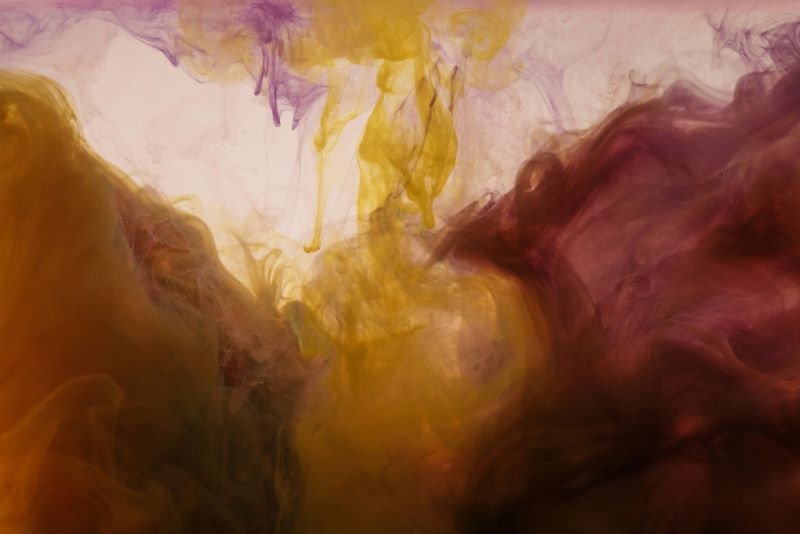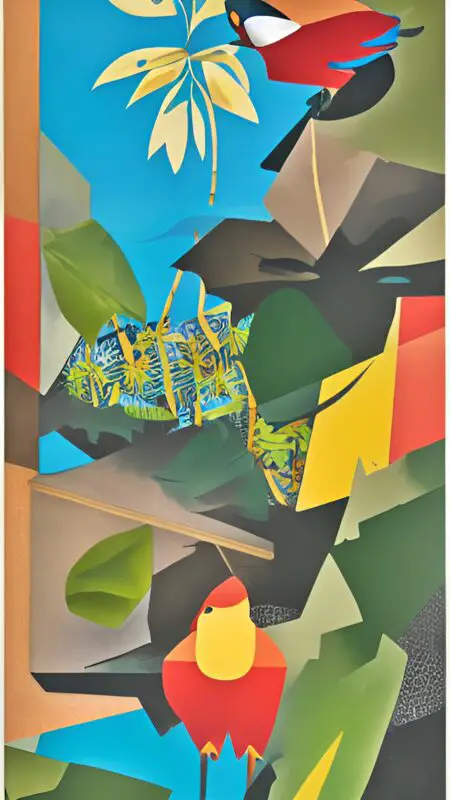In the world of art, we often focus on perfecting our techniques and expressing our creativity, but have you ever thought about the environmental impact of the materials you use? Many traditional art supplies, such as oil paints and acrylics, are made from non-renewable resources and can release harmful chemicals into the environment. This issue not only affects the planet but can also diminish the sustainability of your art practice.
The reality is that conventional art materials contribute to pollution, waste, and the depletion of natural resources. With growing awareness about environmental issues, artists are increasingly seeking ways to create art that aligns with their values and minimizes harm, and while there are of course many materials you can buy that have a smaller carbon footprint , it’s also important to find alternatives that do not compromise quality while also being environmentally friendly.
, it’s also important to find alternatives that do not compromise quality while also being environmentally friendly.
Fortunately, there is a solution. In our article, “8 Sustainable Art Materials to Incorporate Into Your Next Project,” we explore a range of eco-friendly options that can transform your artistic process. From recycled paper and natural pigments to water-based inks and bamboo brushes, these materials provide sustainable choices without sacrificing your creative vision. Discover how you can make a positive impact on the environment while producing beautiful, inspiring art.
Table of Contents
Recycled Paper
Using recycled paper for sketching and drawing is a great way to reduce waste and minimize the impact on forests. Many companies now offer sketchbooks and drawing pads made from recycled paper . Additionally, you can use old newspapers and magazines to create collages and mixed media pieces.
. Additionally, you can use old newspapers and magazines to create collages and mixed media pieces.
Recycled paper not only supports sustainability but also often features unique textures and qualities that can add character to your art. Additionally, incorporating old newspapers and magazines into your mixed media projects can further enhance creativity while contributing to waste reduction. Embracing recycled paper is an easy yet impactful step towards a greener art practice, ensuring that your work supports both your creative expression and environmental stewardship.
- ✔ SIMPLE YET ELEGANT: Made using the high quality acid-free and 100% recycled paper, this blank...
- ✔ DURABLE COVER WITH FLAT OPENING: This set of 2 sketchbooks seamlessly lay flat on any surface...
- ✔ ENJOY CREATIVE FREEDOM: With 256 smooth, acid-free, and resistant to feathering and bleeding...
Last update on 2025-06-16 / Affiliate links / Images from Amazon Product Advertising API
Natural Pigments
Natural pigments, such as those made from plants and minerals, have been used for centuries by artists. Not only are they beautiful, but they are also sustainable and non-toxic. Some great examples of natural pigments include indigo, ochre, and charcoal.
include indigo, ochre, and charcoal.
Popular natural pigments like indigo, ochre, and charcoal are not only beautiful but also minimize environmental impact. By choosing natural pigments, you support a tradition of responsible art-making while avoiding harmful chemicals found in many commercial products. Their rich, organic colors and sustainable sourcing make them a perfect choice for artists committed to both creativity and environmental responsibility.

Water-Based Inks
Water-Based Inks are an excellent choice for artists seeking a more sustainable and eco-friendly printing option. Unlike traditional oil-based inks, which can be harmful to the environment and require harsh solvents for cleanup, water-based inks offer a much greener alternative. These inks are easy to clean up with just soap and water, reducing the need for toxic chemicals.
Additionally, water-based inks provide a broader spectrum of colors and are generally more user-friendly compared to their oil-based counterparts. By choosing water-based inks, you can enhance your artwork while minimizing environmental impact and supporting a more sustainable art practice.
Eco-Friendly Paints
Traditional paints often contain toxic chemicals that can be harmful to both the environment and the artist. Eco-friendly paints, on the other hand, are made from natural ingredients and are much safer for both the artist and the planet. Look for paints made from plant-based ingredients, such as soy, or those that are free from volatile organic compounds (VOCs).
Upcycled Materials
Upcycled Materials are a fantastic way to embrace sustainability and creativity in your art projects. By repurposing old materials, you not only reduce waste but also transform everyday items into unique and beautiful pieces of art. For example, using old clothing to create textile art or repurposing metal scraps into sculptures can add a distinctive touch to your work while supporting environmental conservation.
Upcycling helps minimize the demand for new resources and promotes a circular economy, making it a powerful choice for artists who want to make a positive impact on the planet while expressing their creativity.
Bamboo Brushes
Bamboo Brushes offer a sustainable and eco-friendly alternative to traditional paintbrushes, which are often made from non-renewable materials like plastic and animal hair. Crafted from bamboo, these brushes are not only durable and long-lasting but also lightweight and comfortable to use.
Their sustainable design helps reduce environmental impact while providing artists with a high-quality tool for their craft. Ideal for those who spend extended periods painting, bamboo brushes combine practicality with a commitment to sustainability, making them a smart choice for eco-conscious artists looking to enhance their art practice.
Natural Beeswax
Natural Beeswax  is a versatile and eco-friendly material that brings sustainability to various art projects. This natural substance can be melted and used as a binder for pigments, creating non-toxic and vibrant artworks. Additionally, beeswax can be molded into sculptures and other forms, offering a unique texture and finish.
is a versatile and eco-friendly material that brings sustainability to various art projects. This natural substance can be melted and used as a binder for pigments, creating non-toxic and vibrant artworks. Additionally, beeswax can be molded into sculptures and other forms, offering a unique texture and finish.
Not only is beeswax environmentally friendly, but it also has a pleasant, sweet scent, enhancing the artistic experience. By incorporating beeswax into your projects, you embrace a sustainable approach to art-making while benefiting from its natural qualities and versatility.

Recycled Glass
Recycled Glass is a dynamic and sustainable material that can elevate a wide range of art projects, including mosaics and sculptures. Sourced from old windows, bottles, and other glassware, recycled glass can be cut and shaped to suit your design needs. Using recycled glass not only reduces waste but also adds a unique and beautiful element to your art .
.
This eco-friendly material not only helps reduce waste but also introduces a distinctive and aesthetically pleasing element to your artwork. By incorporating recycled glass, you contribute to environmental conservation while adding a unique touch to your creations.
Final Words
Incorporating sustainable art materials into your creative process is a powerful way to support environmental stewardship while producing exceptional work. Our article, “8 Sustainable Art Materials to Incorporate Into Your Next Project,” highlights various eco-friendly options such as recycled paper, natural pigments, and bamboo brushes, among others.
By choosing materials like these, you not only minimize your environmental footprint but also embrace innovative and artistic practices. Notable artists such as Maya Lin , who uses recycled materials in her environmental artworks, and Nek Chand, who crafted his Rock Garden
, who uses recycled materials in her environmental artworks, and Nek Chand, who crafted his Rock Garden from upcycled materials, exemplify the impact of sustainable art. Adopting these practices allows you to contribute positively to the planet while enhancing your artistic expression.
from upcycled materials, exemplify the impact of sustainable art. Adopting these practices allows you to contribute positively to the planet while enhancing your artistic expression.


